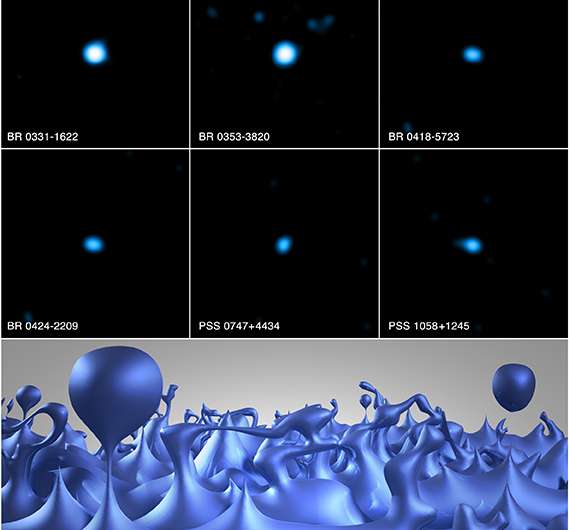NASA telescopes set limits on space-time quantum 'foam'

A team of scientists has used X-ray and gamma-ray observations of some of the most distant objects in the universe to better understand the nature of space and time. Their results set limits on the quantum nature, or "foaminess," of spacetime at extremely tiny scales.
This study combines data from NASA's Chandra X-ray Observatory and Fermi Gamma-ray Space Telescope along with ground-based gamma-ray observations from the Very Energetic Radiation Imaging Telescope Array (VERITAS).
At the smallest scales of distance and duration that we can measure, spacetime—that is, the three dimensions of space plus time—appears to be smooth and structureless. However, certain aspects of quantum mechanics, the highly successful theory scientists have developed to explain the physics of atoms and subatomic particles, predict that spacetime would not be smooth. Rather, it would have a foamy, jittery nature and would consist of many small, ever-changing, regions for which space and time are no longer definite, but fluctuate.
"One way to think of spacetime foam is if you are flying over the ocean in the airplane, it looks completely smooth. However, if you get low enough you see the waves, and closer still, foam, with tiny bubbles that are constantly fluctuating" said lead author Eric Perlman of the Florida Institute of Technology in Melbourne. "Even stranger, the bubbles are so tiny that even on atomic scales we're trying to observe them from a very high-flying airplane."
The predicted scale of spacetime foam is about ten times a billionth of the diameter of a hydrogen atom's nucleus, so it cannot be detected directly. However, If spacetime does have a foamy structure there are limitations on the accuracy with which distances can be measured because the size of the many quantum bubbles through which light travels will fluctuate. Depending on what model of spacetime is used, these distance uncertainties should accumulate at different rates as light travels over the large cosmic distances.
The researchers used observations of X-rays and gamma-rays from very distant quasars—luminous sources produced by matter falling towards supermassive black holes—to test models of spacetime foam. The authors predicted that the accumulation of distance uncertainties for light traveling across billions of light-years would cause the image quality to degrade so much that the objects would become undetectable. The wavelength where the image disappears should depend on the model of spacetime foam used.
Chandra's X-ray detection of quasars at distances of billions of light-years rules out one model, according to which photons diffuse randomly through spacetime foam in a manner similar to light diffusing through fog. Detections of distant quasars at shorter, gamma-ray wavelengths with Fermi and even shorter wavelengths with VERITAS demonstrate that a second, so-called holographic model with less diffusion does not work.
"We find that our data can rule out two different models for spacetime foam," said co-author Jack Ng of the University of North Carolina in Chapel Hill. "We can conclude that spacetime is less foamy that some models predict."
The X-ray and gamma-ray data show that spacetime is smooth down to distances 1,000 times smaller than the nucleus of a hydrogen atom.
These results appear in the May 20th issue of The Astrophysical Journal.
More information: "New Constraints on Quantum Gravity from X-Ray and Gamma-Ray Observations," Eric S. Perlman et al., 2015 May 20, Astrophysical Journal, Vol. 805, No. 1, 10 dx.doi.org/10.1088/0004-637X/805/1/10 , Preprint: arxiv.org/abs/1411.7262
Journal information: Astrophysical Journal
Provided by Chandra X-ray Center


















